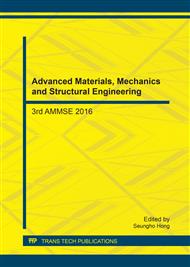p.214
p.220
p.224
p.229
p.235
p.241
p.246
p.251
p.255
Small Wind Turbine Design Verification by Computer Simulation
Abstract:
Rotor blade design relies heavily on the aerodynamic theory. Extensive calculations are necessary in order to determine the blade parameters such as chord and thickness distributions, twist angle distribution and taper that is matched with the selected airfoil sections. For practical purposes, the engineers need a convenient means to verify their design. Wind turbine blades must be designed to operate in desirable performance. This research proposes a computer aided method that helps the engineers to examine the design and amend it in time. The numerical example shows good applicability of the methodology proposed. The proposed methodology not only lets us verify our design scientifically but also makes us understand the associated physical insight. The numerical example demonstrated here showed the converted power by the rotor can be evaluated easily by Flow Simulation according to the aerodynamics theory.
Info:
Periodical:
Pages:
235-240
Citation:
Online since:
February 2017
Authors:
Keywords:
Price:
Сopyright:
© 2017 Trans Tech Publications Ltd. All Rights Reserved
Share:
Citation:


